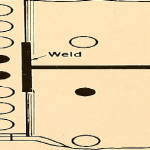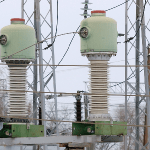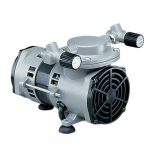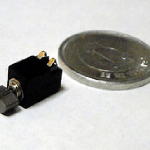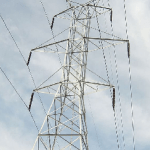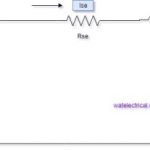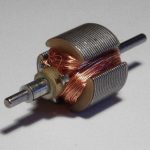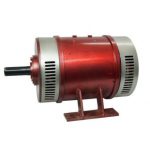In the prehistoric period, the scope of welding was forge welding where this process follows up with metal heating and then brazing. But, the enhancements and innovations of technology have shown development in the era of welding that by the end of the 19th century, people became more modernized and their welding techniques also adapted to the change. Arc welding, resistance and gas welding are the fundamental welding techniques employed in many … [Read more...]
Basics of Electricals
What is a Current Transformer : Working Principle and Its Advantages
The current transformer (CT), also known as an instrumental transformer, is used to either reduce or propel the primary current across the secondary winding. The current produced across the secondary terminal is directly proportional to the primary winding. In high power circuits, the voltage across the primary side is scaled down to a minimum value, which helps to measure the actual AC transmission current through standard ammeter safely. In this article, … [Read more...]
What is a Diaphragm Pump : Working Principle & Its Applications
Pumps have a long period of history and they were into existence from 2000 B.C. To fetch water, the initial tool that was invented was called shadoof. Even it does not function in the mechanical approach, it was widely accepted by many and best serves the pumping activity. The construction of all these stood as the basis for the development of diaphragm pumps and they were into the market from 1854 onwards. The basic invention of the diaphragm pump was … [Read more...]
What is a Vibrator Motor : Circuit, Types and Its Specifications
Well, you might be well-versed with the word “Vibration”. Mostly we all know what vibration in mobile phones is where it vibrates our mobile when there is a notification or when we receive any call. This is the only scenario that gets into our thought about vibration, but there are many cases where vibration pays attention such as in the compressor rotation in refrigerators, to run the washing machine vibrator. Extending this concept, we need to be clear … [Read more...]
What is Ferranti Effect : Circuit Diagram, Advantages & Disadvantages
Ferranti Effect is one of the undesirable phenomena that happens in power systems. Fundamentally it explains the rise in receiving end voltage as compared to sending end voltage due to line capacitance and inductance for a long transmission line i.e. the transmission line with length greater than 160 km. Conceptualized by Sir S. Z. Ferranti in the year 1887, this effect explained the impact of line capacitance on receiving end voltage under no load or … [Read more...]
Universal Motor : Working and its Types
We know that there are different kinds of electric motors available in the market such as single phase, self-starting induction, slip ring, etc. This article discusses a unique kind of electric motor. Imagine an electric motor that works on both AC and DC. This motor is named as a universal motor. As the name suggests, the working ability of this motor mainly depends on AC & DC with related characteristics. This motor also includes a high starting … [Read more...]
What is a DC Series Generator – Load Test, Characteristics & Applications
An electrical generator is a kind of machine that can able to convert the input mechanical energy to electrical energy. It was invented in 1831 by Michael Faraday who worked on several theories of magnetic induction. Finally, it was made to work by the introduction of Electromagnetic Induction. This theory is the basis for the working of an electrical generator. Moreover, this electrical energy generated is used by electrical motors. However, these motors … [Read more...]
What is a Rotor – Types, Working, & Applications
The rotor was invented in the early 1800s and it was discovered by the naval officers R. P. C. Spengler and Theo A. van Hengel. Earlier it was used in Rotor dynamics for the encryption of files especially used in cryptography. The invention of this type is also supported by Gustaf de Laval who is working for the development of turbine machinery. This type was supposed to be called Laval type as per his name Gustaf de Laval. In this article, we shall … [Read more...]
DC Shunt Generator – Working, Load Test & Magnetisation Characteristics
Early 1830 Faraday worked on the process that is related to electromagnetic fields. He discovered a theory that is basic behind the working of a generator. Later several discoveries have been done that led to the invention of some other generators, those are the shunt, series, and compound type. However, all these types work on the same principle I,e the Faraday's law of electromagnetic induction. So, the invention of the magnetic laws by Faraday behind … [Read more...]
How to Make a DC Motor – How a Generator is Made from it
The electric motors first developed were of electrostatic in nature. This type of motor is first invented by Scott scientist Andrew Gordon and Benjamin Franklin in the early 1740s. Later many investigations have been done to improve the performance of the electric motor. In 1821 Faraday invented the rotator motion by the induction principle. Later this rotator motion is considered to be the principle of electric motors. In this article, we shall discuss … [Read more...]
